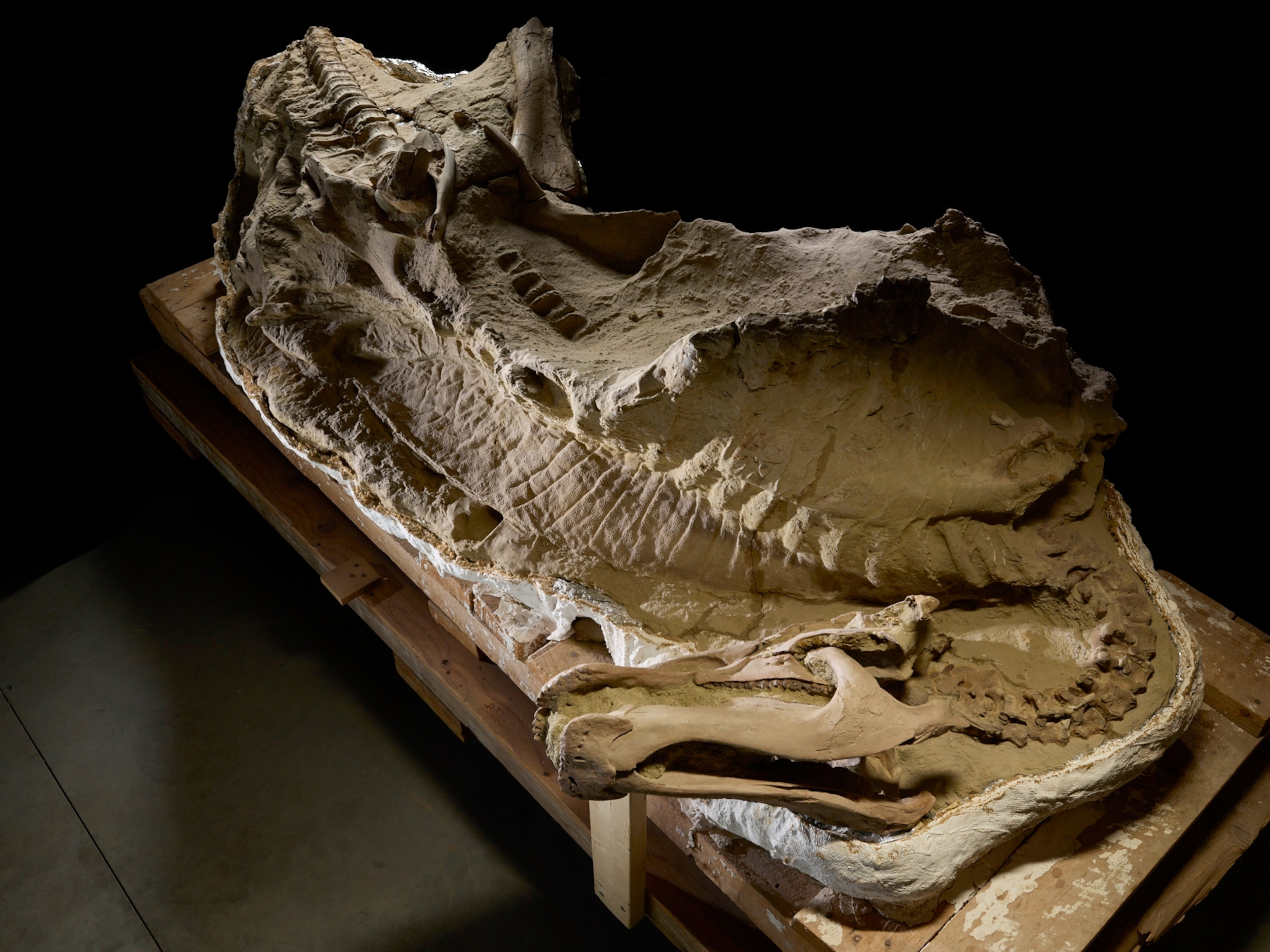Ever wonder where our worst nightmares come from?
For the ancient Greeks, it may have been the fossils of giant prehistoric animals.
The tusk, several teeth, and some bones of a Deinotherium giganteum, which, loosely translated means really huge terrible beast, have been found on the Greek island Crete. A distant relative to today's elephants, the giant mammal stood 15 feet (4.6 meters) tall at the shoulder, and had tusks that were 4.5 feet (1.3 meters) long. It was one of the largest mammals ever to walk the face of the Earth.
"This is the first finding in Crete and the south Aegean in general," said Charalampos Fassoulas, a geologist with the University of Crete's Natural History Museum. "It is also the first time that we found a whole tusk of the animal in Greece. We haven't dated the fossils yet, but the sediment where we found them is of 8 to 9 million years in age."
Skulls of Deinotherium giganteum found at other sites show it to be more primitive, and the bulk a lot more vast, than today's elephant, with an extremely large nasal opening in the center of the skull.
To paleontologists today, the large hole in the center of the skull suggests a pronounced trunk. To the ancient Greeks, Deinotheriumskulls could well be the foundation for their tales of the fearsome one-eyed Cyclops.
Explaining the Natural World
In her book The First Fossil Hunters: Paleontology in Greek and Roman Times,Adrienne Mayor argues that the Greeks and Romans used fossil evidence—the enormous bones of long-extinct species—to support existing myths and to create new ones.
"The idea that mythology explains the natural world is an old idea," said Thomas Strasser, an archaeologist at California State University, Sacramento, who has done extensive work in Crete. "You'll never be able to test the idea in a scientific fashion, but the ancient Greeks were farmers and would certainly come across fossil bones like this and try to explain them. With no concept of evolution, it makes sense that they would reconstruct them in their minds as giants, monsters, sphinxes, and so on," he said.
Homer, in his epic tale of the trials and tribulations of Odysseus during his 10-year return trip from Troy to his homeland, tells of the traveler's encounter with the cyclops. In the The Odyssey, he describes the Cyclops as a band of giant, one-eyed, man-eating shepherds. They lived on an island that Odysseus and some of his men visited in search of supplies. They were captured by one of the Cyclops, who ate several of the men. Only brains and bravery saved all of them from becoming dinner. The captured travelers were able to get the monster drunk, blind him, and escape.
A second myth holds that the Cyclops are the sons of Gaia (earth) and Uranus (sky). The three brothers became the blacksmiths of the Olympian gods, creating Zeus' thunderbolts, Poseidon's trident.
"Mayor makes a convincing case that the places where a lot of these myths originate occur in places where there are a lot of fossil beds," said Strasser. "She also points out that in some myths monsters emerge from the ground after big storms, which is just one of those things I had never thought about, but it makes sense, that after a storm the soil has eroded and these bones appear."
Wandering the Earth
A cousin to the elephant, deinotheres roamed Europe, Asia, and Africa during the Miocene (23 to 5 million years ago) and Pliocene (5 to 1.8 million years ago) eras before becoming extinct.
Finding the remains on Crete suggests the mammal moved around larger areas of Europe than previously believed, Fassoulas said. Fassoulas is in charge of the museum's paleontology division, and oversaw the excavation.
He suggests that the animals reached Crete from Turkey, swimming and island hopping across the southern Aegean Sea during periods when sea levels were lower. Many herbivores, including the elephants of today, are exceptionally strong swimmers.
"We believe that these animals came probably from Turkey via the islands of Rhodes and Karpathos to reach Crete," he said.
The Deinotherium's tusks, unlike the elephants of today, grew from its lower jaw and curved down and slightly back rather than up and out. Wear marks on the tusks suggest they were used to strip bark from trees, and possibly to dig up plants.
"According to what we know from studies in northern and eastern Europe, this animal lived in a forest environment," said Fassoulas. "It was using his ground-faced tusk to dig, settle the branches and bushes, and in general to find his food in such an ecosystem."
The fossils were uncovered when land was being cleared for an olive orchard; Fassoulas is encouraging farmers to be on the lookout for more.





